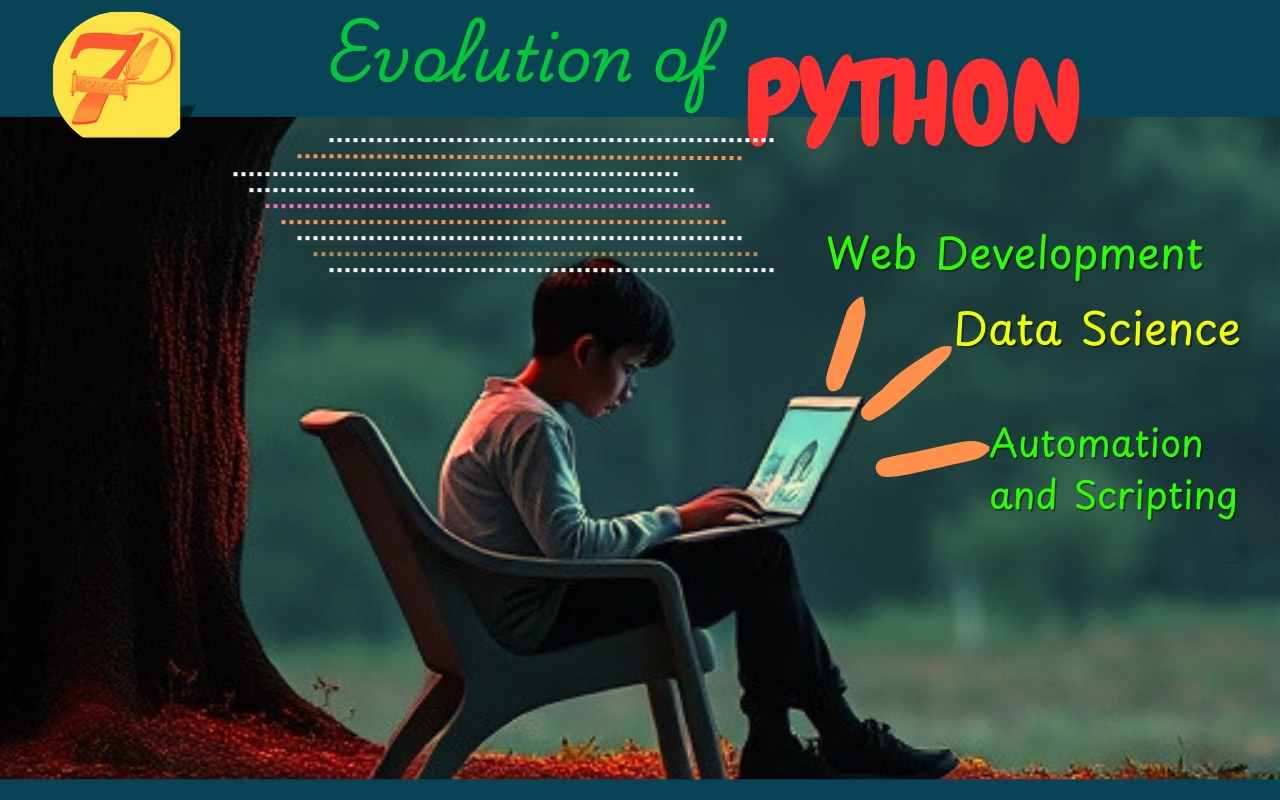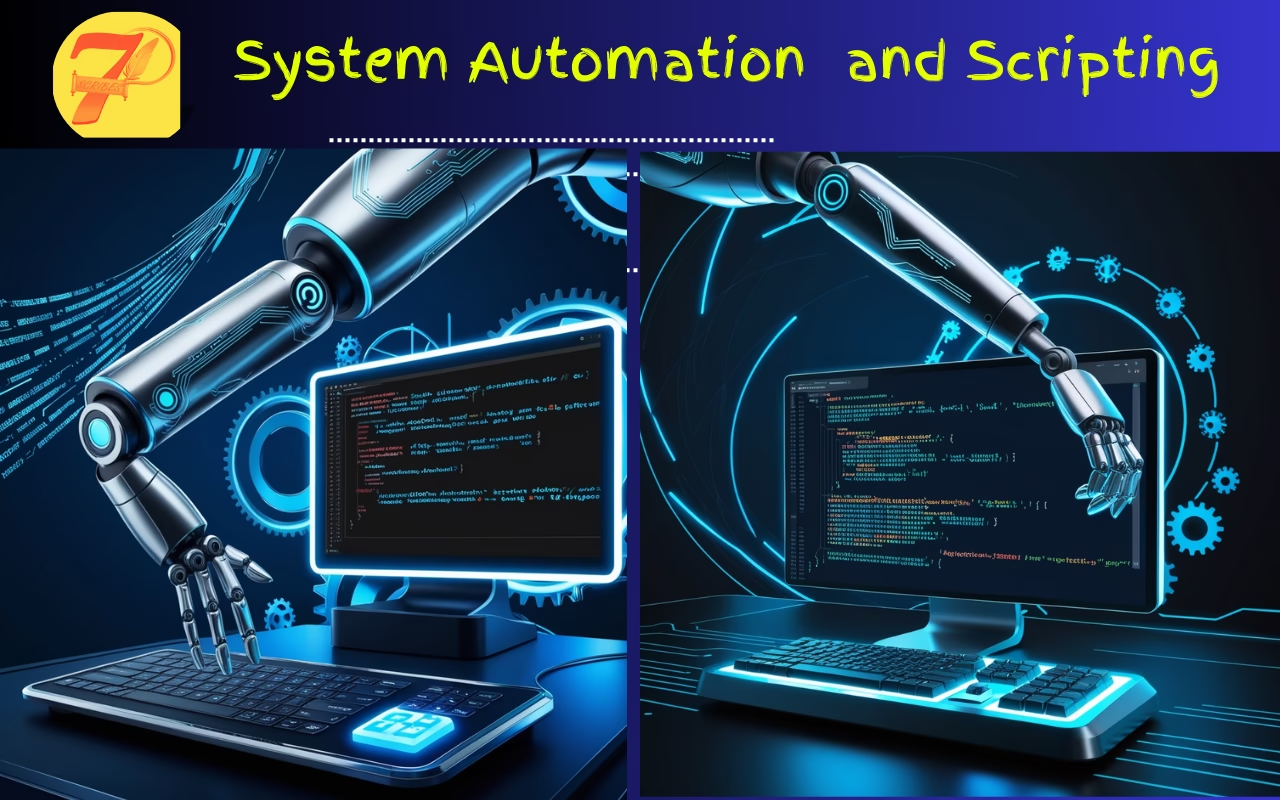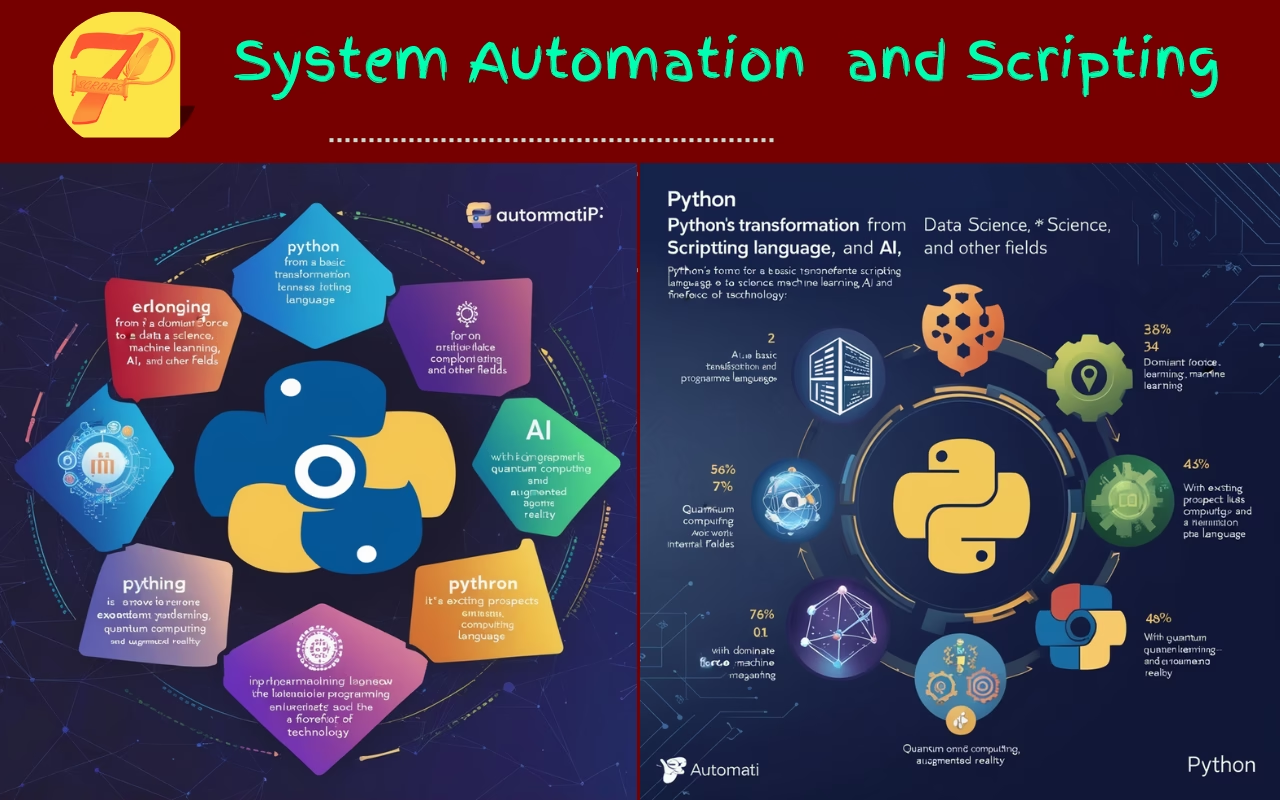Python has emerged as one of the most widely utilized programming languages globally, fueling a diverse range of applications spanning from web development to cutting-edge machine learning algorithms. Initially conceived as a basic scripting language in the late 1980s, it has transcended its original purposes significantly. Over the years, it’s adaptability, user-friendliness, and extensive array of libraries have made it an indispensable tool for developers across various domains. This article will explore the evolution of Python, tracing its journey from a modest scripting language to a dominant presence in the realms of data science, artificial intelligence, and beyond.
The Evolution
Originally a simple scripting language, it has evolved into a versatile and essential tool for developers worldwide due to its adaptability, user-friendliness, and extensive library support. Initially designed for basic tasks like scripting, automation, and web development, Python’s commitment to simplicity and elegant design has contributed to its widespread popularity among developers seeking a powerful yet easy-to-understand language.
1. Impact on Web Development:
Python’s significance in web development grew significantly with the introduction of frameworks like Django and Flask, which enabled the creation of scalable and efficient web applications while maintaining Python’s hallmark traits of simplicity and flexibility. Python’s clear syntax made it a top choice for developers aiming to reduce complexity without compromising control, leading to its adoption by major websites such as Instagram and Pinterest
2. Impact on System Automation and Scripting
Python’s reputation as a scripting language made it widely accepted in system administration and automation tasks due to its clear syntax and ease of use. Libraries like OS, Sys, and Shutil enhanced their capabilities for tasks ranging from file management to system maintenance, appealing to professionals looking for a simpler alternative to languages like C or Perl. Its adaptability extended its utility to domains like DevOps and testing, streamlining workflows and enhancing operational efficiency.
3. Emergence in Data Science:
Python gained prominence in data science by offering simplicity and clarity, attracting professionals seeking a versatile language for data analysis. Critical libraries like NumPy, Pandas, Matplotlib, SciPy, and scikit-learn provided essential tools for numerical computing, data analysis, visualization, and building machine learning models, solidifying Python as the top choice for big data analysis tasks.
4. Leadership in Machine Learning and AI:
5. Versatility across Technologies:
This language’s popularity in data science and AI spread to other fields like automation, robotics, IoT, and game development, demonstrating its versatility and wide library support. Its simplicity and integration capabilities with other languages made it suitable for programming IoT devices, controlling robotic systems, and developing intelligent systems. The vibrant Python community constantly innovates new tools, ensuring Python remains at the forefront of emerging technologies.
6. Ongoing impact and future prospects:
Python’s transformation from a basic scripting language to a dominant force in data science, machine learning, AI, and other fields underscores its enduring significance and versatility. With exciting prospects in fields like quantum computing and augmented reality, its journey reflects its continual expansion and influence in shaping the forefront of technology.
Conclusion
Python has undergone a remarkable transformation, evolving from a basic scripting language to a dominant presence in fields such as data science, machine learning, AI, and beyond. Its inherent simplicity, clarity, and robust ecosystem of libraries have made it the preferred language for developers across diverse industries. As it continues to expand, there are no signs of slowing down, with exciting prospects in emerging fields like quantum computing and augmented reality on the horizon. Python’s journey from humble beginnings to shaping the forefront of technology is a testament to its versatility and enduring significance in the programming realm.
To get more knowledge about programming and AI, click the below links
1. Why has Python become so popular in recent years?
Its popularity stems from its simplicity, readability, and versatility. It has a vast ecosystem of libraries and frameworks that make it ideal for web development, automation, data science, machine learning, and artificial intelligence.
2. How has this language influenced web development?
Its frameworks like Django and Flask have made web development faster and more efficient, enabling developers to build scalable applications with clean and maintainable code.
3. What makes it a top choice for data science?
It offers powerful libraries like NumPy, Pandas, and Matplotlib that simplify data analysis, visualization, and machine learning, making it a go-to language for data scientists.
4. How did Python become the leading language for AI and machine learning?
Its clear syntax, along with frameworks like TensorFlow and PyTorch, has streamlined the development of deep learning and AI models, making them more accessible to both researchers and developers.
5. What is the future of these languages in emerging technologies?
Python’s adaptability positions it well for future technologies like quantum computing and augmented reality. Its continuous development and strong community support ensure it remains at the forefront of innovation
